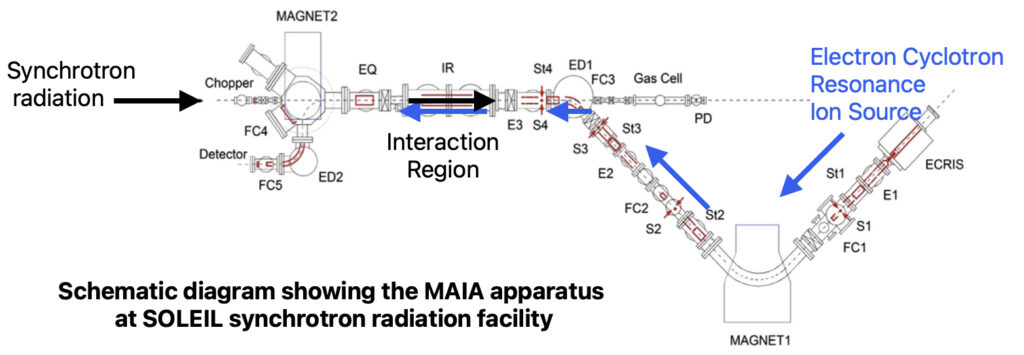Date: September 2022
Recent measurements of the absolute photoionization cross sections of magnesiumlike S4+ has provided valuable insight into the behaviour of positively charged ions in astrophysical and laboratory plasmas. The experiments were conducted at the SOLEIL synchrotron radiation facility by NCPST researchers, Jean-Paul Mosnier and Eugene Kennedy, in collaboration with Université Paris-Saclay, Orsay, France, Hasan Kalyoncu University, Turkey, and Western Michigan University, Michigan, USA. Single- and double-ionization ion yields produced by the photoionization of the 2p subshell of magnesium-like S4+ were observed. Theoretical calculations of the photoionization cross sections were also carried out, and the results were compared with the experimental data. The study found that while there was generally good agreement between the theoretical predictions and experimental observations, notable differences in the strengths and positions of predicted resonances were observed, and significant systematic energy shifts of the theoretical predictions were required.
The S4+ ions constitute a particularly nice test bed for a detailed comparison of experimental data with the predictions of different theoretical methodologies. The closed-shell nature of the ground state means that the dominant challenge for theory is to treat the excited states which include both inner-shell and multiple electron excitations.
The study highlights the importance of experimental measurements to benchmark theoretical models, particularly in the realm of astrophysics as new satellite x-ray observatories require reliable fundamental data on the interaction of photons with positively charged ions. With the increasing need for atomic and molecular data in the field of laboratory astrophysics, this study serves as an important contribution to the ongoing research in this area.
The full Publication in Physical Review A can be found here
